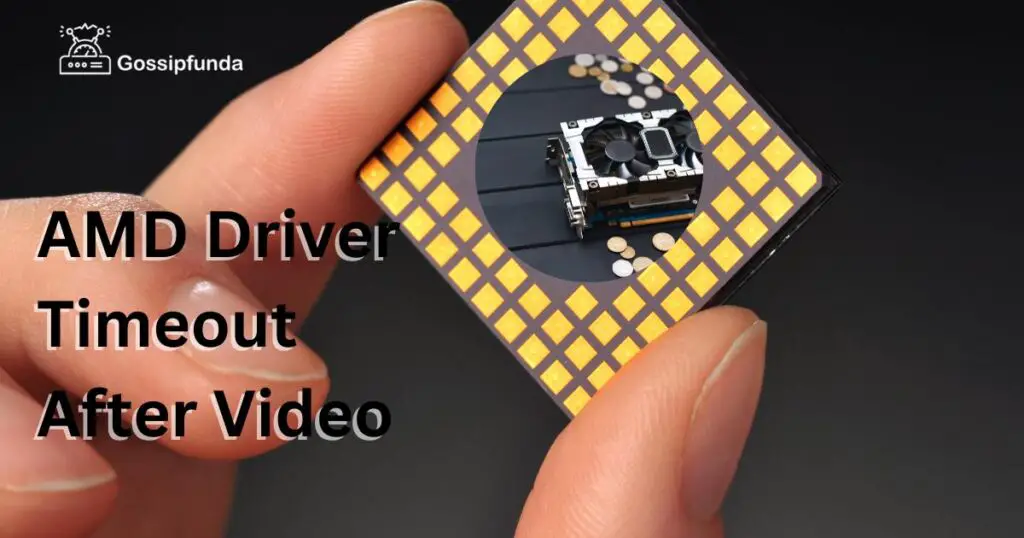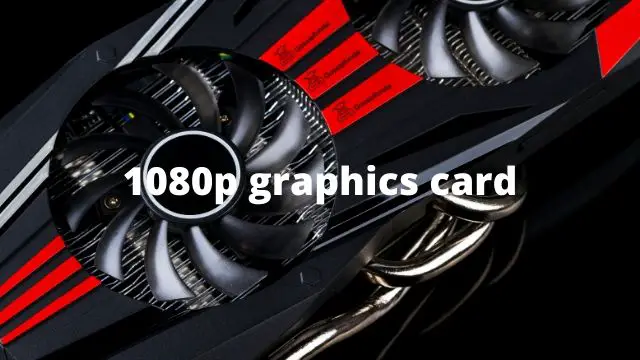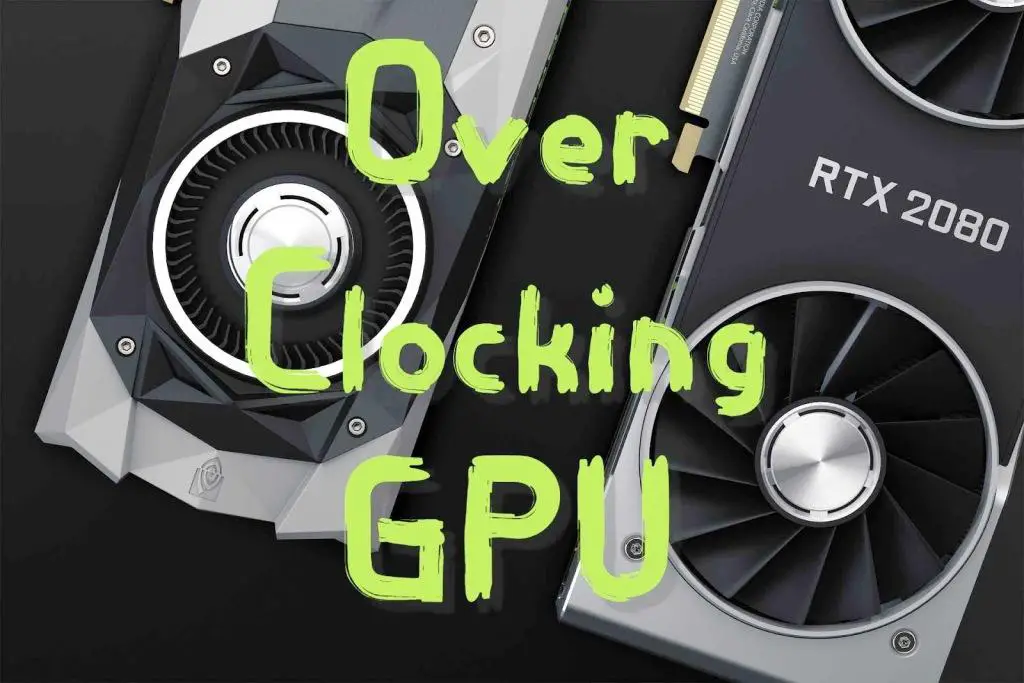Due to their outstanding gaming performance and dependability, AMD graphics cards enjoy widespread popularity among video editors, gamers, and other experts. However, AMD graphics card users could occasionally encounter driver timeout issues following video play or video capture, which can cause system crashes or other unexpected patterns of behaviour. This article is going to discuss the motives behind why AMD drivers time out after going through video functions, their implications for affecting the system, and how to resolve them. Users can improve system speed and user experience through making themselves aware of these shortcomings.

Causes
- One of the most frequent reasons for AMD driver timeouts is overheating. A driver timeout might occur when the graphics card overheats and slows down its activities to prevent harm. Numerous factors, such as inadequate ventilation, dust accumulation, or high ambient temperatures, can contribute to overheating.
- Driver conflicts: Driver timeouts may be brought on by incompatibilities between the graphics card driver and other system parts. This can occur while running outdated or incompatible software or drivers, or when the graphics card driver conflicts with another driver. Conflicts can also arise while utilising out-of-date or unsupported software or drivers.
- Driver timeouts can be caused by using obsolete drivers since newer applications may not work with them. To guarantee optimum performance and compatibility with other system components, drivers must be kept up to date.
- Driver timeouts can be brought on by faulty hardware, including the power supply or the graphics card itself. Wear and tear, inadequate maintenance, or flaws in the manufacturing process can all lead to hardware problems.
- Driver timeouts can also be caused by memory problems. The graphics card driver may malfunction due to insufficient memory or a defective memory module, which will result in a timeout.
- Driver timeouts can occasionally be brought on by system updates, such as those to the operating system or other drivers. This may occur if upgrades introduce new flaws or compatibility problems, interfere with the graphics card driver, or both.
- Malware and viruses: Malware and viruses are responsible for a number of system problems, such as driver timeouts. Malware can prevent the graphics card driver or other system components from functioning normally, which can cause timeouts or crashes.
- Driver timeouts can be brought on by power problems, such as power spikes or fluctuations. Faulty power sources, insufficient power supply capacity, or challenges with the electrical grid can all contribute to these concerns.
- Overclocking: Increasing the graphics card’s clock speed over the specs that are advised might result in driver timeouts. The graphics card may overheat or become unstable as a result of overclocking, which might result in timeouts or crashes.
- Software conflicts: Software conflicts, such as external video play or video capture programmes, might lead to driver timeouts. The usage of incompatible codecs or settings by the programme that interfere with the graphics card driver might cause conflicts, which can result in timeouts or crashes.
How can the video problem caused by AMD driver timeout be fixed?
The graphics card driver must be updated.
The AMD driver timeout after visual error can be brought on by an out-of-date graphics card driver, among other problems. Follow these procedures to upgrade the graphics card driver:
- Open the Run dialogue box by pressing Windows + R.
- Enter the command “devmgmt.msc” to launch the Device Manager.
- Right-click on the AMD graphics card in the “Display adapters” category after expanding it.
- To finish the procedure, choose “Update driver” and adhere to the on-screen directions.
Set the TDR timeout value higher:
Windows has a tool called TDR (Timeout Detection and Recovery) that keeps track of the graphics card driver’s reaction time. To avoid system crashes, Windows will restart the driver if it does not react within a predetermined amount of time. The AMD driver timeout after visual problem is brought on by some users for whom the default timeout setting may not be adequate. How to raise the TDR timeout value is as follows:
- Open the Run dialogue box by pressing Windows + R.
- To launch the Registry Editor, enter “regedit” and hit Enter.
- Navigate to the key that reads:
- HKEY_LOCAL_MACHINE\SYSTEM\CurrentControlSet\Control\GraphicsDrivers
- In the right pane, click and then choose “New > DWORD (32-bit) Value” from the context menu.
- To change the value data for the new value, give it the name “TdrDelay” and double-click on it.
- Enter the desired timeout value in seconds (for example, “8” for 8 seconds) in the “Value data” column.
- To save the changes and exit the Registry Editor, click “OK”.
Adapt the video settings lower:
Reducing the video’s resolution, frame rate, or quality will lessen the strain on your graphics card to prevent driver timeouts if it suffers from difficulty keeping up with high video settings. For older or less able graphics cards, that technique can be particularly helpful. Find the video settings or options menu to change the video settings in your video player or capture programme. Eliminate the resolution or quality and experiment with various configurations until you figure out ones that strengthen your graphics card.
Examine for overheating:
Problems with graphics cards, such as driver timeouts, are frequently triggered by overheating. Graphics cards produce a lot of heat, and if your computer’s cooling system fails to function properly, it might lead to overheating, which might damage the card or impair performance. Make certain that your computer has an adequate cooling system to avoid overheating. This can entail enhancing your cooling system or installing more fans. Furthermore, dust accumulation, which can restrict airflow and prevent overheating, can be avoided by routinely cleaning your computer’s fans and vents.
Switch off hardware acceleration:
Software can transfer some work to the graphics card using a function called hardware acceleration. While in some circumstances this can boost performance, it can also lead to graphics card problems. Your video player or capture programme may be able to assist you avoid driver timeouts and other graphics card problems by disabling hardware acceleration.
In the settings or options menu of your video player or screen capture programme, you can turn off hardware acceleration. But be aware that turning off hardware acceleration might make the software run slower.
Stop using third-party software:
System utilities and antivirus programmes, for example, might interact with graphics card drivers and introduce instances like driver timeouts. investigate by switching off any unnecessary software if you’re inclined to believe third-party software is the actual cause of the problem and see regardless of the issue however exists. You can use the Windows Task Manager or the product’s options menu to disable applications from outside sources. Bear in mind that deactivating antivirus software could potentially subject your computer to malware and other dangers to its security, so it’s critical to re-enable it as soon as you’ve determined the root of the problem.
Install drivers completely:
A clean install of the drivers can be helpful if you’ve already tried upgrading or rolling back your drivers and the problem still exists. An issue brought on by incompatible or obsolete drivers can be resolved by doing a clean install, which totally removes the old drivers and install the new ones. You can use the AMD Cleanup Utility to remove the outdated drivers before downloading and installing the most recent drivers from the AMD website to do a clean install of the drivers.
Reach out to AMD support:
It is advised to contact AMD support for additional help with your graphics card driver issue if none of the aforementioned fixes work. They could have detailed troubleshooting procedures or know how to fix the issue. You may call AMD support or use their website to get in touch with them. When you contact support, be prepared with all pertinent details about your system configuration and the problem you’re having.
Conclusion
Users of AMD graphics cards may find AMD driver timeout during video playing or capture to be an irritating problem. The issue can be fixed in a number of ways, including updating or reverting drivers, lowering video settings, checking for overheating, disabling hardware acceleration or third-party software, performing a clean install of drivers, looking for conflicts, running a system scan, and, if necessary, contacting AMD support. It’s crucial to remember that the optimal approach could rely on the unique hardware and software setup you have. As a result, it is advised to attempt each option separately until the problem is fixed. Users may drastically lower the frequency of AMD driver timeouts and enjoy continuous video playing and recording by using the remedies described in this article.
FAQs
By visiting the AMD website or utilising a third-party driver update tool, you may determine whether your AMD drivers need to be updated.
You can try decreasing the video settings, turning off hardware acceleration or third-party applications, installing the drivers from scratch, looking for conflicts, running a system scan, or contacting AMD support if upgrading your AMD drivers doesn’t resolve the problem.
Yes, AMD driver timeouts can be brought on by excessive heat. Verify the fans are clean and operating correctly, and that your computer has appropriate cooling.
You must delete your current drivers before downloading and installing the most recent drivers from the AMD website in order to do a clean install of AMD drivers.
Yes, viruses and malware can lead to AMD driver timeouts. Run a system scan to look for any viruses or malware that might be the problem.
Divyansh Jaiswal is a B.Tech graduate in Computer Science with a keen interest in technology and its impact on society. As a technical content writer, he has several years of experience in creating engaging and informative content on various technology-related topics.
Divyansh’s passion for writing and technology led him to pursue a career in technical writing. He has written for various publications and companies, covering topics such as cybersecurity, software development, artificial intelligence, and cloud computing.
Apart from writing, Divyansh is also interested in exploring new technologies and keeping up with the latest trends in the tech industry. He is constantly learning and expanding his knowledge to provide his readers with accurate and up-to-date information.
With his expertise in both technology and writing, Divyansh aims to bridge the gap between complex technical concepts and the general public by creating easy-to-understand content that is both informative and enjoyable to read.


